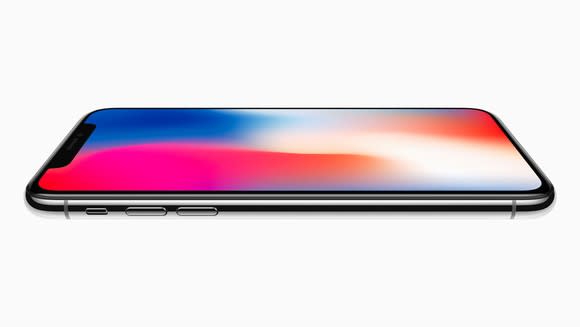Apple Inc.'s Big New Feature for Its 2019 iPhones Revealed
On Nov. 14, Bloomberg published a report claiming that Apple (NASDAQ: AAPL) intends to add a "rear-facing 3D sensor" to its flagship iPhones slated to launch in 2019. Bloomberg said this represents "another step toward turning the handset into a leading augmented-reality device," citing "people familiar with the plan."
This year's iPhone X includes a 3D sensor embedded in the front-facing camera system, which Apple dubs a TrueDepth camera. This sensor is used for features such as Apple's Face ID biometric authentication as well as for the company's animated emoji feature, Animoji.

Image source: Apple.
The rear-facing 3D sensor in the 2019 iPhone models will reportedly work differently from the one found in the iPhone X's front-facing TrueDepth camera system.
"The existing system relies on a structured-light technique that projects a pattern of 30,000 laser dots onto a user's face and measures the distortion to generate an accurate [3D] image for authentication," the Bloomberg article explained.
The system on the rear-facing cameras on the 2019 iPhones will, instead, "use a time-of-flight approach that calculates the time it takes for a laser to bounce off surrounding objects to create a three-dimensional picture of the environment."
The good news
The good news is that if Apple can get this technology worked out, it'll have a compelling selling point for its 2019 iPhones. A rear-facing 3D sensor alone won't be enough to carry the product cycle on its own, but as the headline feature combined with other, more routine, upgrades (e.g. camera quality, processing power, potential form factor improvements, and so on), it'd be quite nice.
In addition to helping Apple sell more iPhones during the product cycle beginning in the second half of 2019, the inclusion of such technology in a high-volume smartphone should afford developers the freedom to build augmented reality applications designed to take advantage of the new rear-facing 3D sensing capabilities.

Image source: Apple.
If augmented reality takes off on the iOS platform thanks to continued hardware advancements, then Apple will have cultivated the ecosystem for a "killer app" that could help drive iPhone upgrades.
The not-so-good news
The bad news is that from the sound of this report, KGI Securities analyst Ming-Chi Kuo was right about Apple forgoing the inclusion of a rear-facing 3D sensor in the 2018 iPhones. That's obviously a selling point that could've helped Apple maintain iPhone growth momentum in the next iPhone product cycle.
Not all is lost, though. Next year, Apple is expected to introduce a new ultra-high-end version of the iPhone X with a gigantic 6.46-inch display as well as a lower-cost iPhone that includes many of the key technologies of the iPhone X (full face display, TrueDepth camera). It'll also sell an upgraded version of this year's iPhone X with a 5.85-inch organic light emitting diode (OLED) display, as well.
I think that bringing the best of this year's iPhone X to lower price points as well as to larger form factors, coupled with the standard upgrades that Apple introduces with each generation, should be more than enough to allow Apple to continue enjoying iPhone unit shipments in the coming fiscal year.
More From The Motley Fool
6 Years Later, 6 Charts That Show How Far Apple, Inc. Has Come Since Steve Jobs' Passing
Why You're Smart to Buy Shopify Inc. (US) -- Despite Citron's Report
Ashraf Eassa has no position in any of the stocks mentioned. The Motley Fool owns shares of and recommends Apple. The Motley Fool has the following options: long January 2020 $150 calls on Apple and short January 2020 $155 calls on Apple. The Motley Fool has a disclosure policy.
